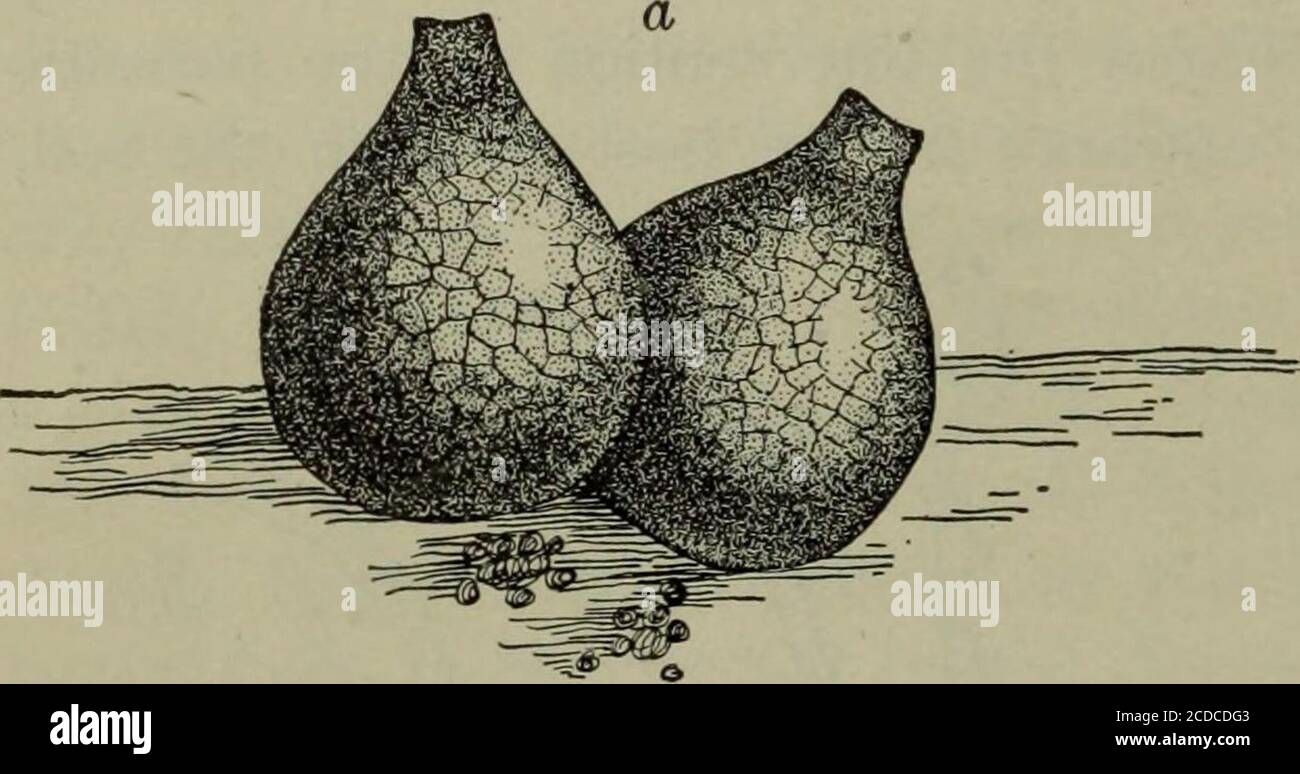. Fungous diseases of plants, with chapters on physiology, culture methods and technique . Fig. 99. Neocosmospora vasinfecta. {c after Erw. F. Smith)«, the fungus in xylem of stem; b and c^ conidial stages from cultures and hence through the root system. This is believed to be thesole method of infection with the form on cotton and cowpea.It is also believed that healthy plants are directly affected with-out the assistance of any other organism or mechanical effectcausing an injury through which the fungus might obtain access.The mycelium of the plant is at first found most abundantly inthe ve

Image details
Contributor:
Reading Room 2020 / Alamy Stock PhotoImage ID:
2CDCDG3File size:
7.2 MB (265.5 KB Compressed download)Releases:
Model - no | Property - noDo I need a release?Dimensions:
2179 x 1147 px | 36.9 x 19.4 cm | 14.5 x 7.6 inches | 150dpiMore information:
This image is a public domain image, which means either that copyright has expired in the image or the copyright holder has waived their copyright. Alamy charges you a fee for access to the high resolution copy of the image.
This image could have imperfections as it’s either historical or reportage.
. Fungous diseases of plants, with chapters on physiology, culture methods and technique . Fig. 99. Neocosmospora vasinfecta. {c after Erw. F. Smith)«, the fungus in xylem of stem; b and c^ conidial stages from cultures and hence through the root system. This is believed to be thesole method of infection with the form on cotton and cowpea.It is also believed that healthy plants are directly affected with-out the assistance of any other organism or mechanical effectcausing an injury through which the fungus might obtain access.The mycelium of the plant is at first found most abundantly inthe vessels of the xylem (Fig. 99, a) ; but in later stages of thedisease it may pervade other tissues. Upon the death of theplant it comes to the surface along the lines of least resistance ;hence it appears lineally distributed in the areas between thevertical lines of bast. The fungous hyphae are, as they occurin the host plant, yellowish in color, considerably septate, andirregularly branched. According to Atkinson conidia may be 238 FUNGOUS DISEASES OF PLANTS. formed within the vessels. These conidia, frequently spokenof as microconidia, are at first cylindrical or elliptical, and with-out septa; but they may become slightly curved and once ortwice septate. These are capable of germination and growthwithin the tissues. On the surface of the host and in culturea type of conidia known as macroconidia may be produced inquantity. These are lunulate or crescent-shaped and from threeto five times septate, measuring 30-50 x 4-6 fi (Fig. 99, c). Upon the host the conidio-phores arise in loosestromatic tufts knownas sporodochia. In cul-ture all. gradations be-tween the small andlarge conidia rriay beobserved. Moreover, anoidium-like stage issometimes produced, and in the race of thisfungus on the jnelonchlamydospores are not uncommon in old cultures. The ascus stage of the fungus has been found bothon the host plant and in cultures upon steamed potatocylinders and other solid media in wh